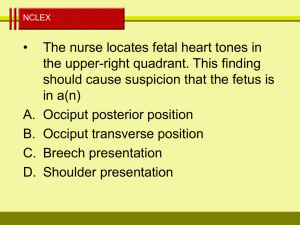
Blank Koagulogramma
When you are pregnant, a gynecologist will tell you to give a heapAnalyzes: mandatory, which all pregnant women must take in certain lines, and additional - if they are necessary. Coagulation during pregnancy is one of the mandatory tests. Do it once in a trimester (easier to say, once every three months). But if a woman becomes registered after the 12th week of pregnancy, then there will be two such studies: immediately when the woman is registered and before maternity leave - at 30 weeks. Additionally, the coagulogram analysis forpregnancy is carried out after the course of treatment, if there were deviations from the norm, and before giving birth, if you are going to do a cesarean section. Blood on the coagulogram during pregnancy is also taken, as for biochemical analysis - from the veins and on an empty stomach. What does the blood coagulogram show?
Eiko 14.03.17 18:48 comment6, celtx_skachat_russkii_mac, 928, musa_zhelil_izhaty_sochinenie, 4394, http://share. You can start the tempering procedure at any time of the year. The main thing is that it happens gradually and regularly. Compliance with the.
Glikogenoza – hereditary diseases which cornerstone genetic defect of production of the enzymes which are taking part in metabolism of carbohydrates is. A characteristic general sign – excessive adjournment of a glycogen in miotsita, hepatocytes and other cages of an organism. Glikogenoza are shown by symptoms of a hypoglycemia, a gepatomegaliya, muscular weakness, a liver, heart, respiratory and renal failure. Diagnostics includes biochemical blood test, a morphological research of biopsiyny material of muscles and a liver, definition of activity of enzymes, molecular genetic tests. Treatment is based on clinical nutrition, medicamentous correction of metabolic frustration, in some cases operations are required. The research of glikogenoz is conducted since 1910. In 1928-29 the symptomatology of a glikogenoz of the I type – 'a disease of accumulation of a glycogen' was described.
Only in 1952 it was succeeded to reveal fermental defect and to establish its connection with development of symptoms. Pathogenetic mechanisms and ways of treatment still remain not up to the end studied. Adobe dreamweaver cs6 download free for pc. 12 types of glikogenoz are so far allocated, 9 are most fully investigated. Prevalence is low, averages 1 case on 40-68 thousand of the population. Epidemiological indicators are identical among representatives of both floors, but at X-recessive inheritance of the man are ill more often. Symptoms are shown in the period of a neonatality or in the early childhood, the current is more often continuously progressing. Reasons of glikogenoz The only factor provoking development of glikogenovy diseases is genetic defect from which insufficiency of the certain enzyme participating in glucose exchange results.
All glikogenoza except for the IX type are inherited by the autosomno-recessive principle. It means that the mutational gene is located on the chromosome which is not linked to a floor, display of a disease is possible only at inheritance of mutations from each of parents – in the presence of two recessive changed genes in an allele.

If one gene from couple is defective, then another – prepotent, normal – provides an organism with enough enzyme. The person at the same time becomes the carrier of a glikogenoz, but is not ill. In couples where both partners – carriers, the probability of the birth of the sick child makes 25%. At a glikogenoza of type IX the pathological gene is localized in a sexual X-chromosome. Pocket girlfriend android app free download. Gemizigotny men have couple of XY, are always sick glikogenozy, give defect to all the daughters. The probability of transfer of a mutation from the female bearer to children of both floors makes 50%. Pathogenesis Pathogenetic basis of all glikogenoz – impossibility of process of synthesis and disintegration of a glycogen, its accumulation in fabrics.